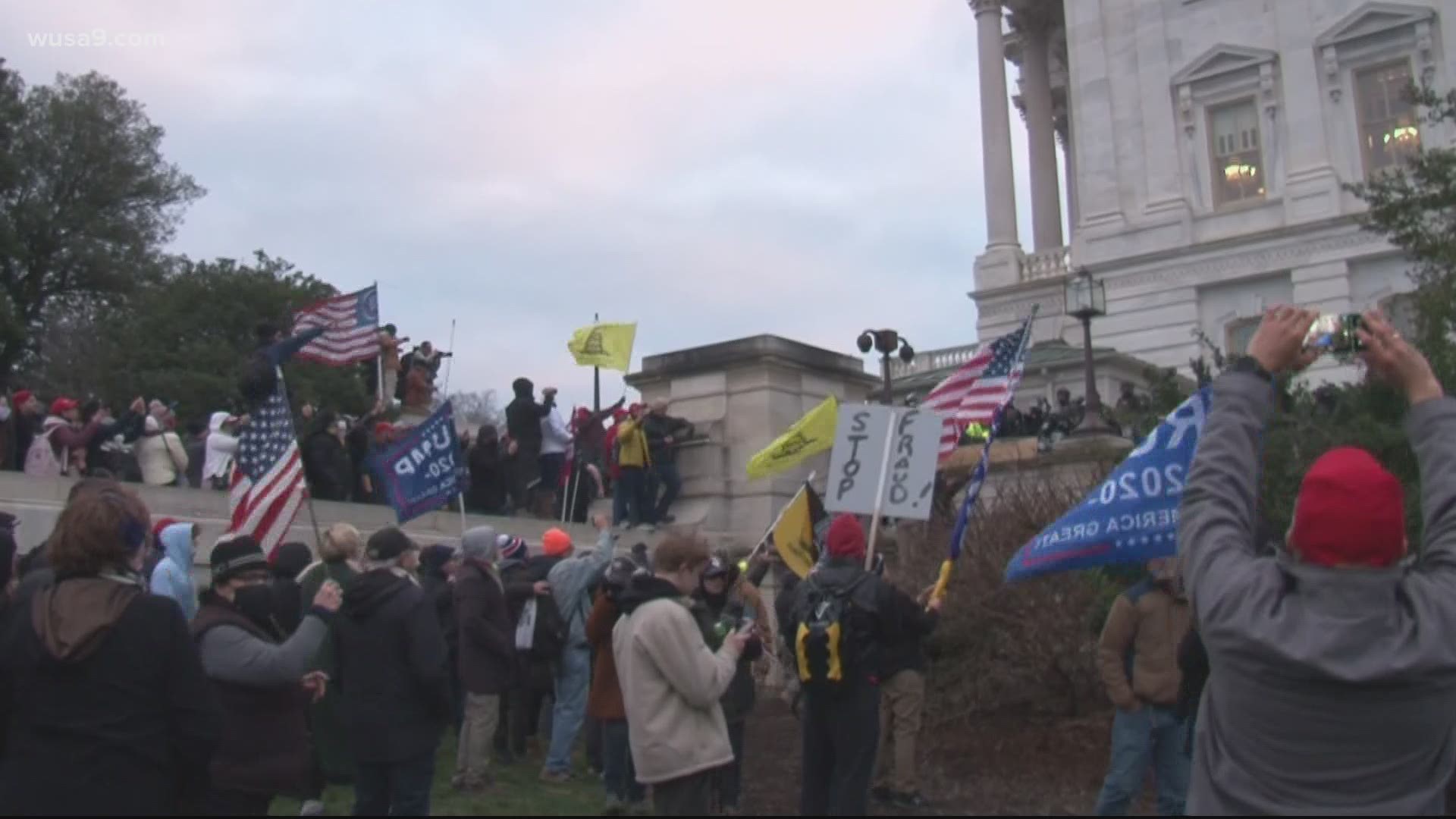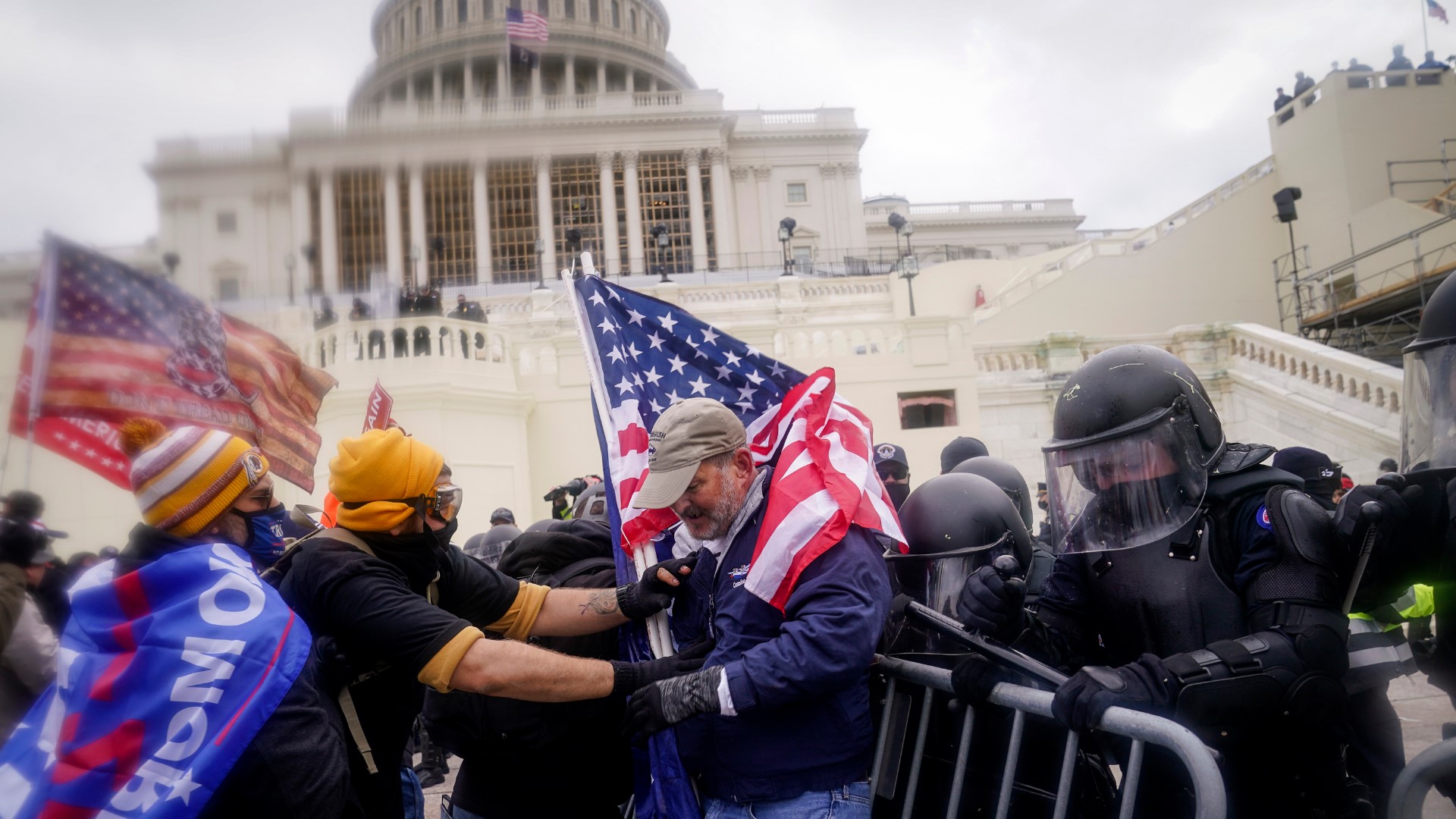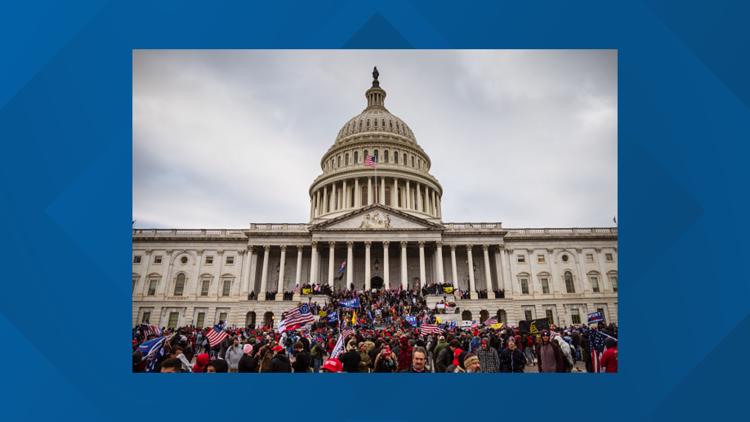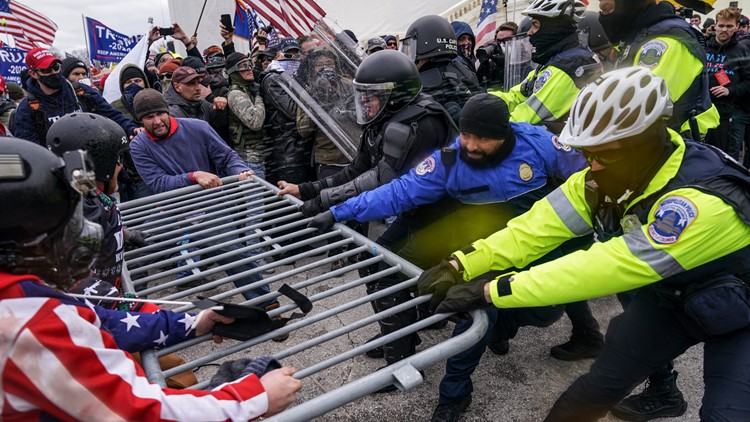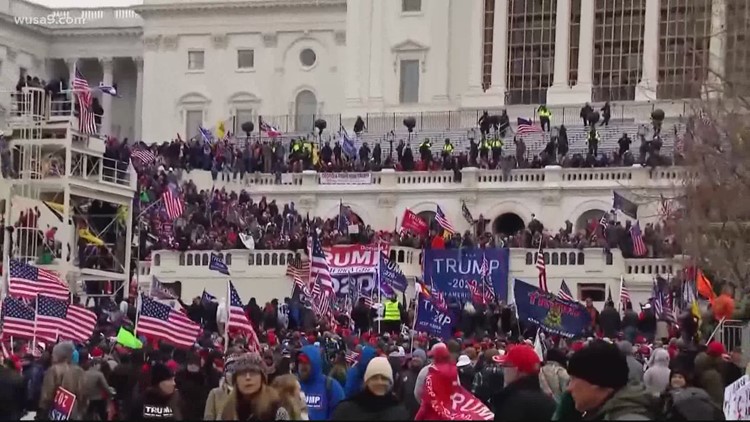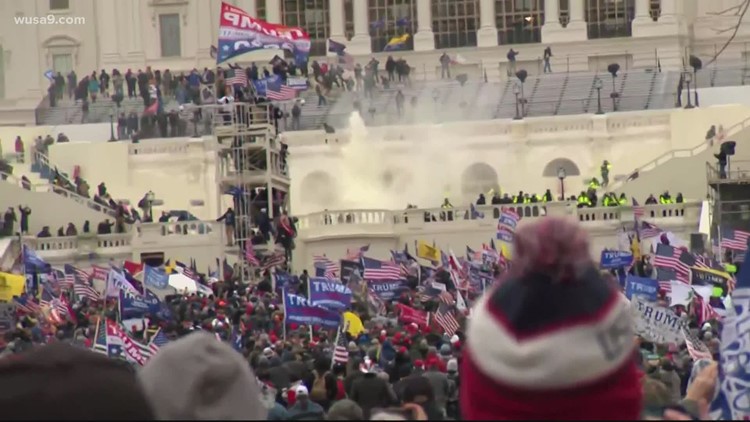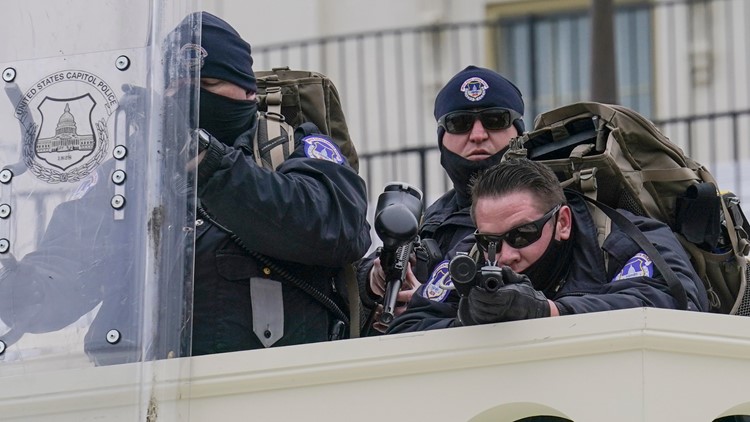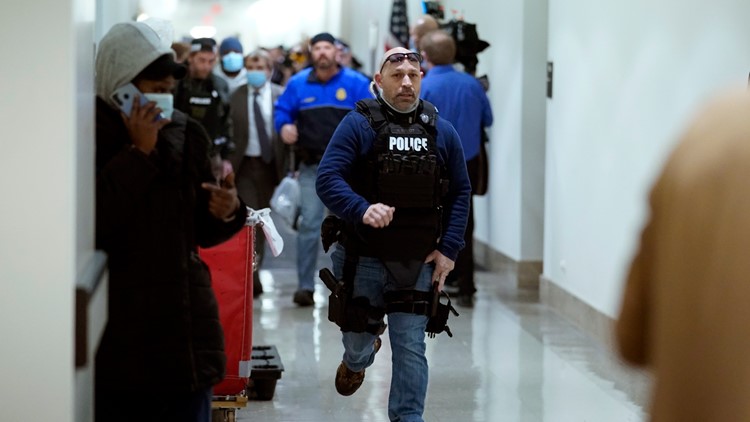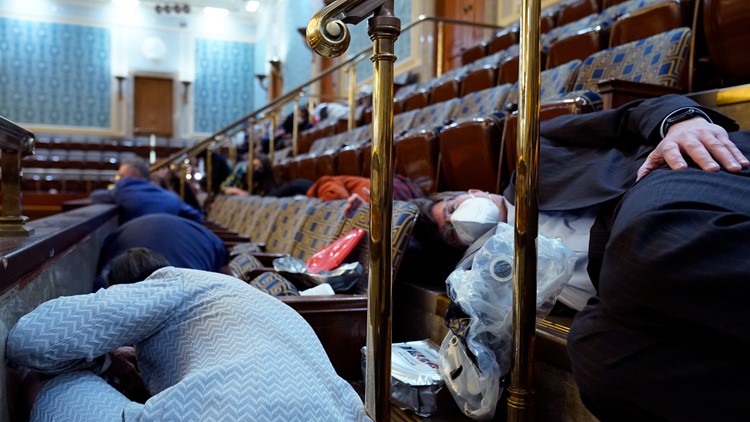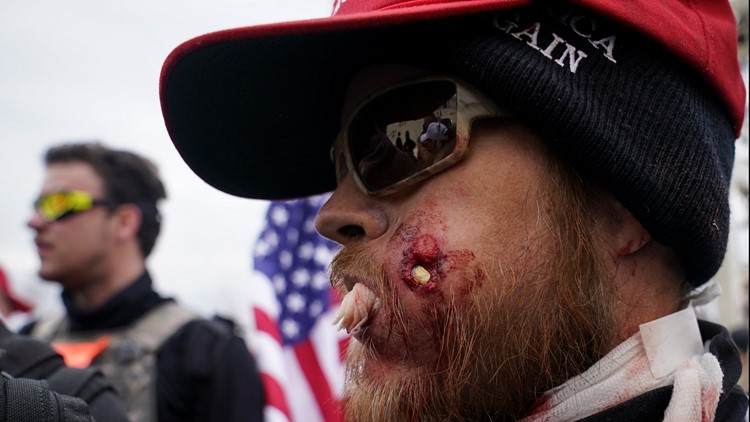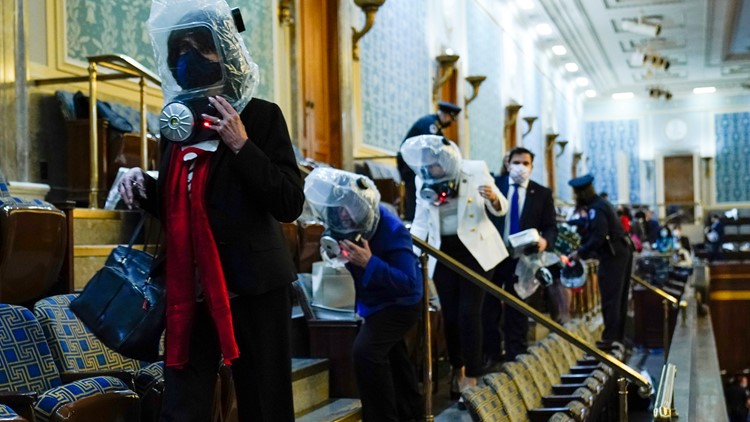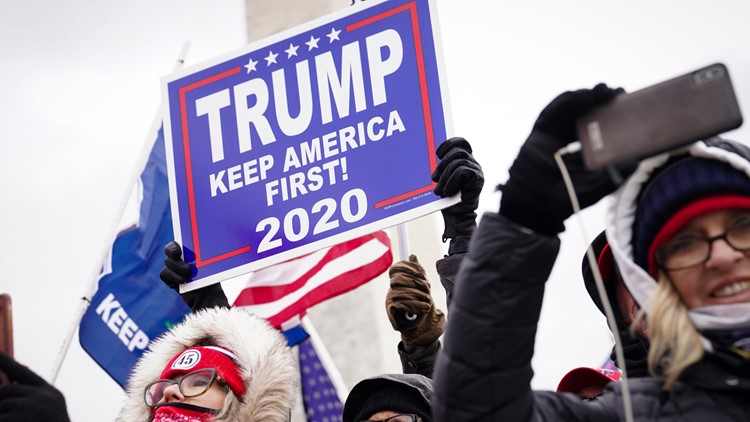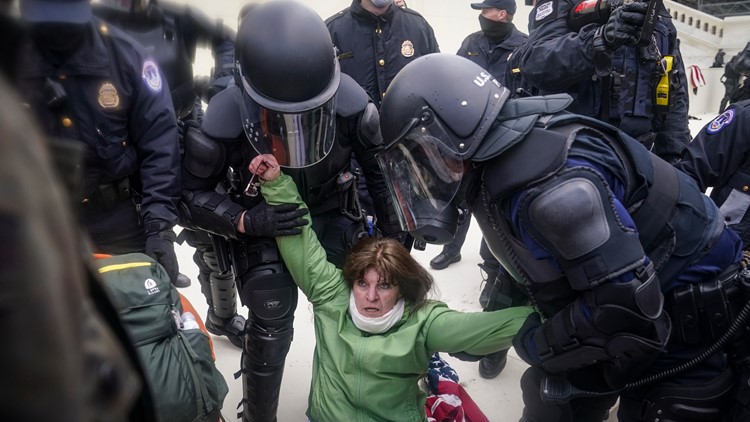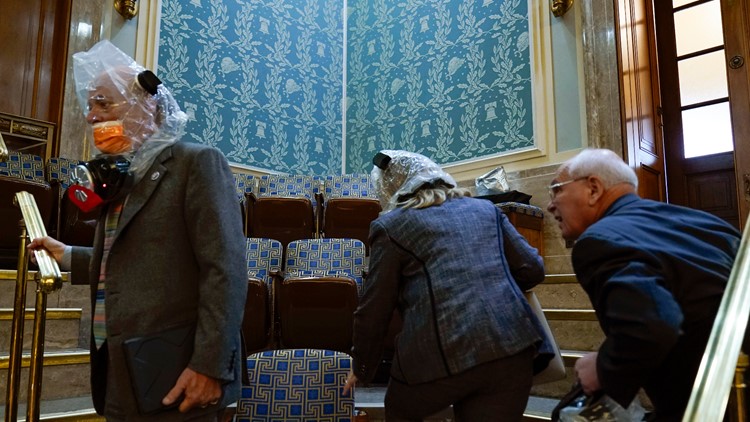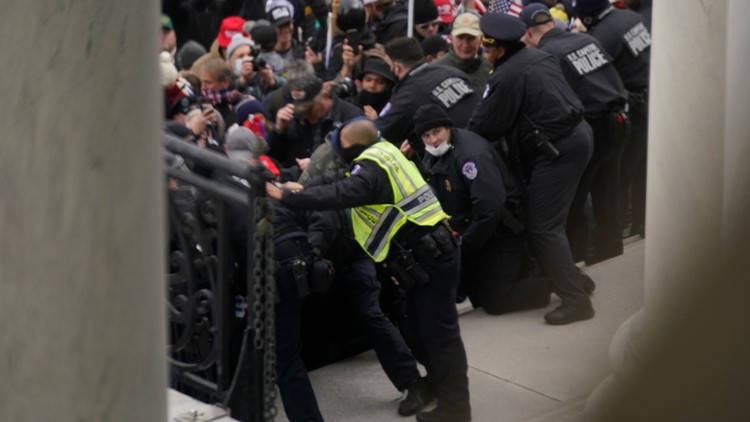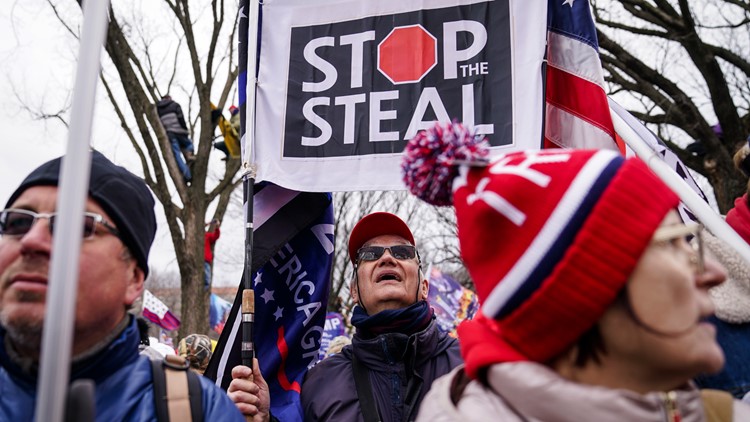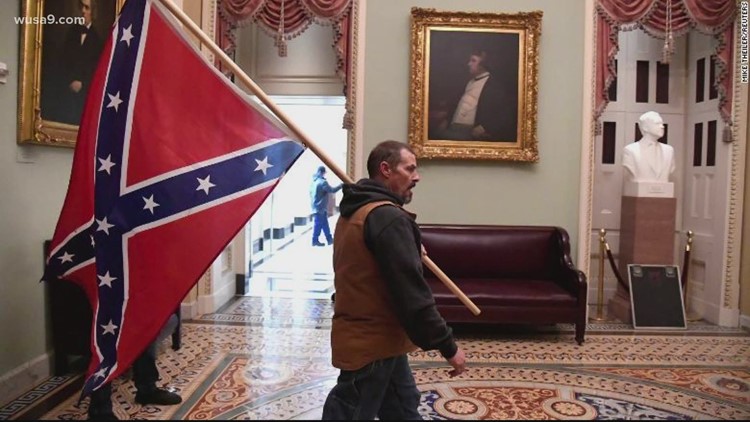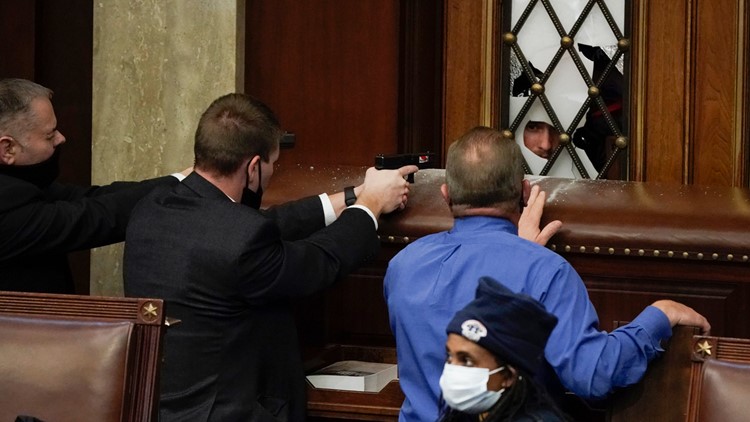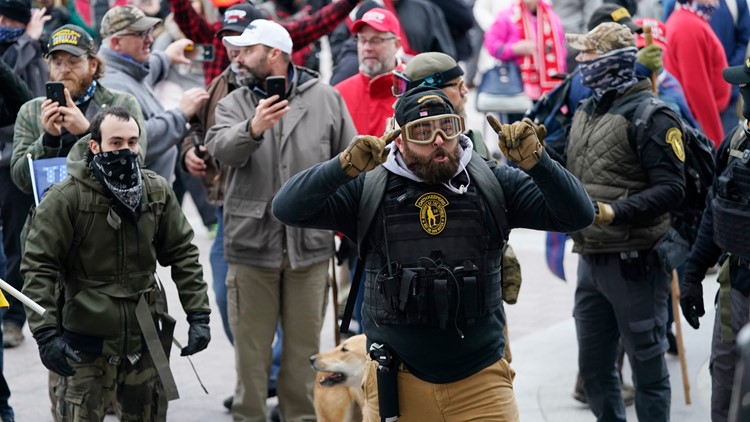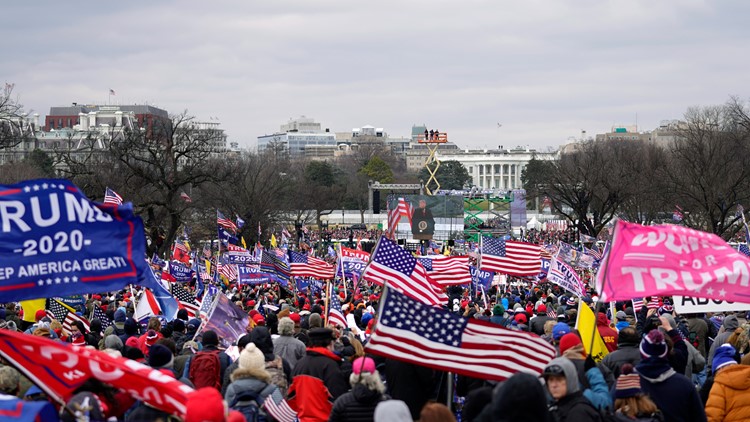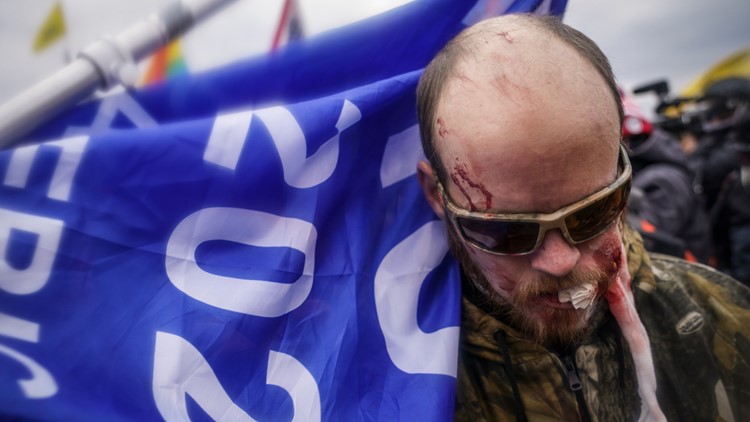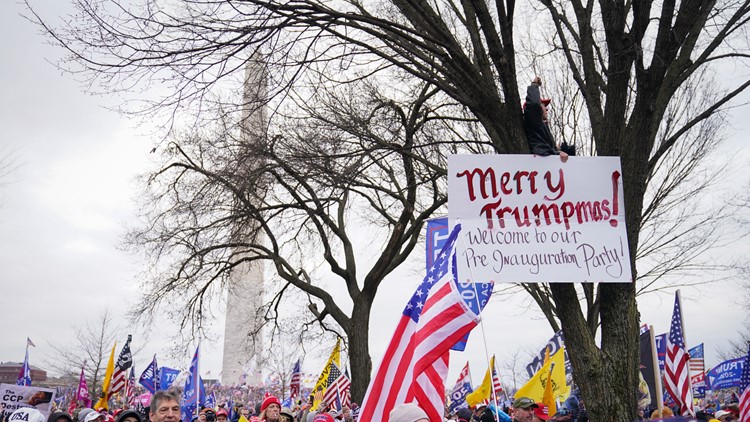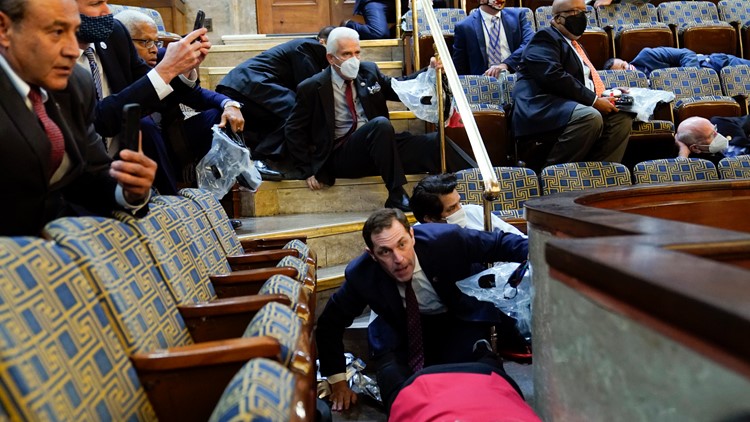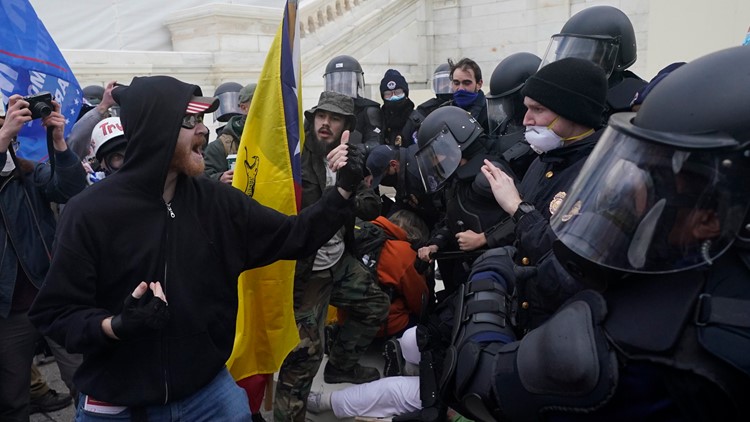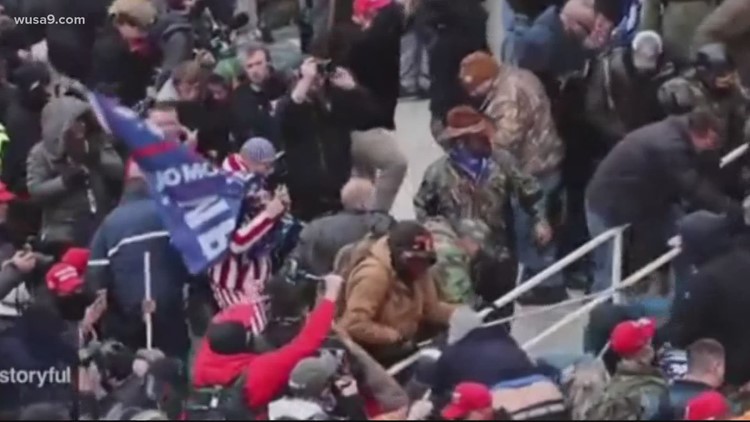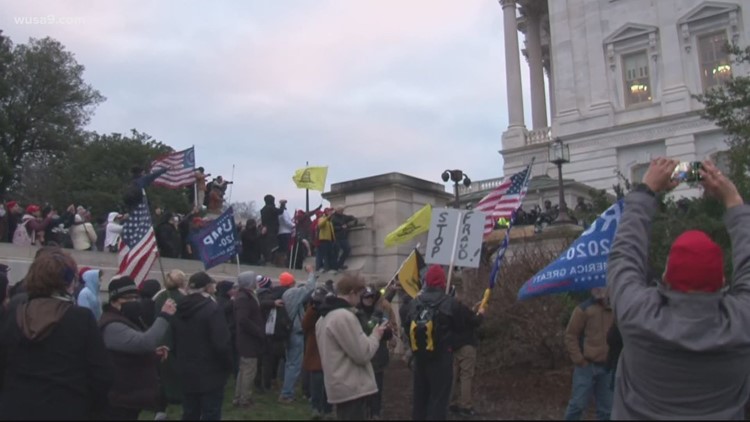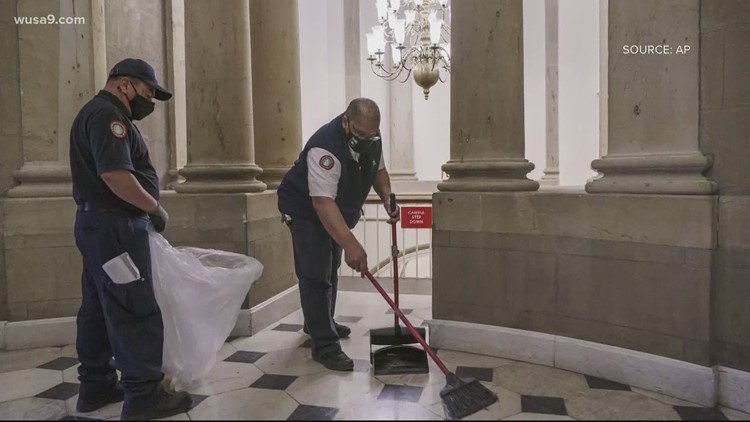WASHINGTON — For the first time, WUSA9 is hearing from the Pentagon that there were in fact active duty and veteran members of the military who participated in the riots at the Capitol on Jan. 6.
Just this week, Pentagon Press Secretary John Kirby said “some of the extremists who stormed the U.S. Capitol on January 6 were active duty service members and others were military veterans.”
Because of that, Secretary of Defense Lloyd J. Austin is ordering all the military branches to stop and take a deeper look into the problem of extremism in the ranks. WUSA9 reached out to Pentagon officials about what exactly that will look like.
Officials said they are still working out the details on what comes next.
Documents from the Department of Defense give a play-by-play of the decisions that may have allowed the insurrection at the Capitol to get as far as it did on Jan. 6.
The three-page timeline from DOD is meant "to memorialize the planning and execution efforts of the Department of Defense to address the violent attack at the U.S. Capitol."
Starting on New Year's Eve when D.C. Mayor Muriel Bowser first asked for National Guard help, the documents detail a day-by-day -- or in some cases a minute-by-minute -- account of what happened, leading up the riots.
Bowser's request was approved for National Guard support on missions including traffic control and at Metro stations. But, in the days leading up to Jan. 6, when asked multiple times, Capitol Police said "there is no request for DOD support."
“We need to learn the lessons from Wednesday, Jan. 6 so that we can better protect and safeguard the Capitol, the building itself and the people who work there and visit every day,” Rep. Anthony Brown (D-MD) said.
Lessons learned can come from the timeline, which gets more detailed on the day of the riots, where we learn about all the back and forth it took to get National Guard help to the Capitol.
TIMELINE OF JAN. 6, 2021
1:05 p.m.
The Assistant Secretary of Defense gets the first inkling something could be wrong when there were reports of crowds moving to the Capitol.
1:26 p.m.
Twenty-one minutes later, Capitol Police order the evacuation of the complex.
1:26-2:22 p.m.
In the next 56 minutes, while rioters are ransacking the Capitol, there are at least three phone calls to talk about sending in additional Guard support. They go between National Guard, Army, Capitol Police, Metropolitan Police, Mayor Bowser and other D.C. officials.
2:30 p.m.
Eight minutes after the last phone call, senior defense officials meet.
3:00 p.m.
Almost a full two hours after DOD first heard something might be wrong, they decide all available DC National Guard forces are required to help take back the Capitol.
3:04 p.m.
Four minutes later, while crowds grow more violent and lawmakers are huddled in safe rooms, the Guard begins full mobilization -- three days, five fatalities, many injuries and immeasurable damage to the American psyche after Capitol Police said they would not need DOD support on Jan. 6.
5:40 p.m.
More than 2.5 hours later, 154 newly mobilized troops arrive at the Capitol to swear in with police and get to work.
8 p.m.
Two hours and 20 minutes later, Capitol Police declare the complex secure.
Jan. 6 Capitol Riots
“There were multiple failures,” retired Army Major Mike Lyons, who has spent the last 15 years doing military analysis, said.
The main failure, according to Lyons, was a lack of pre-planning, which he said was needed to muster the National Guard. The men and women of the Guard are citizen-soldiers who have regular day jobs and need time to deploy.
“They're not always ready,” Lyons said. “They're not in a situation where they're serving all the time. You got to give the military some kind of time there. Well, in this case, we didn't have that time to spare.”
Because of that, at 3 p.m. when the Guard was finally mobilized, Lyons said it was almost too late to prevent the violence and destruction that unfolded.
“You weren't going to get those individuals deployed to a situation where they can impact on the ground in time, based on how fast it was moving, how fast it moved after the rally concluded,” Lyons said. “So, then it became panic.”
As for what can be done to make sure this delay doesn't happen again, Lyons said the military will continue to learn in the after-action review. But first and foremost, he believes there must be better planning and intelligence ahead of time to know what will be needed on the ground.
The DOD inspector general announced it will be investigating the military's roles, responsibilities and response to the Jan. 6 riots, but there's no word yet on how long that will take.

